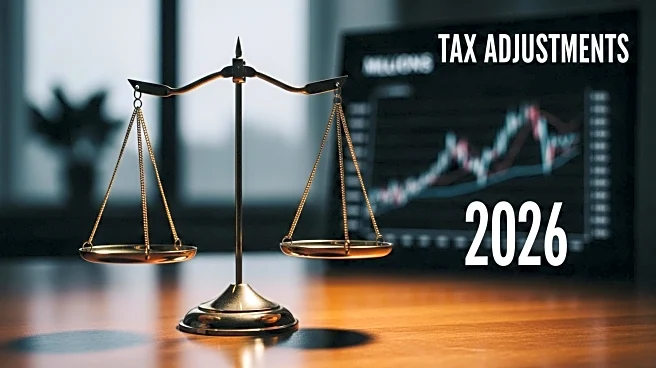What's Happening?
Starting in 2026, workers earning more than $145,000 will be required to make catch-up contributions to their retirement plans using Roth accounts, rather than pre-tax contributions. This change affects 401(k), 403(b), and 457(b) plans, where previously, individuals aged 50 and older could choose between pre-tax and Roth contributions. The IRS finalized these rules, eliminating a key tax-deferral strategy for high-income earners nearing retirement. While contribution limits remain unchanged, the shift will impact retirement planning, payroll systems, and tax liabilities for affected individuals.
Why It's Important?
This policy change is significant as it alters the retirement savings landscape for high-income earners, who will now face higher current-year taxes due to the loss of pre-tax contribution options. The requirement to use Roth accounts means that taxes are paid upfront, potentially increasing taxable income during peak earning years. Employers must ensure their retirement plans are equipped with Roth functionality to comply with the new rules, which could involve significant administrative adjustments. The change may also influence retirement planning strategies, as individuals seek alternative methods to manage their tax liabilities and savings.
What's Next?
Employers and plan administrators will need to update their systems to accommodate the new Roth-only catch-up contribution rules, ensuring compliance and avoiding potential penalties. Employees affected by the change should review their retirement plans and consider alternative savings strategies, such as Health Savings Accounts or spousal contributions. Financial advisors will likely offer new guidance to help clients navigate the implications of these changes and optimize their retirement savings.
Beyond the Headlines
The shift to Roth-only contributions reflects broader trends in tax policy aimed at increasing immediate tax revenue while promoting long-term savings. This change may encourage more disciplined spending and saving habits among high-income earners, as they adjust to higher current tax liabilities. Additionally, the expansion of Health Savings Accounts offers a complementary tool for managing healthcare expenses, providing tax advantages that could offset the impact of the new retirement savings rules.










